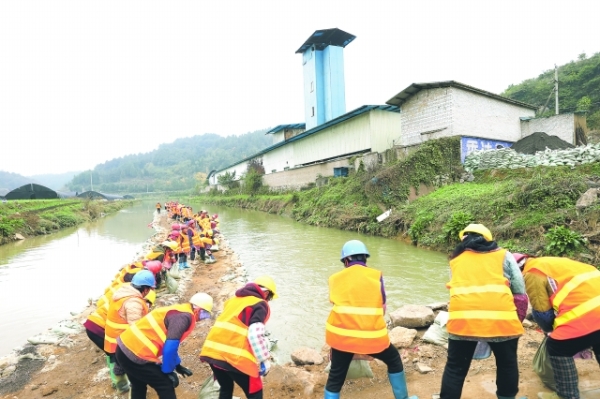Guiyang fights for clear water

Workers clear silt from Guiyang's Maijia River. [Photo/Guiyang news network]
The Nanming River in Guiyang – capital city of Southwest China's Guizhou Province – has been the beneficiary of disciplined and systematic moves against water pollution since 2012, and by 2025, it's hoped the waterway will have achieved fundamental and permanent change to its water quality.
The Nanming River, mother river of the Guizhou capital, flows through five districts, 38 towns and 91 villages – with a total length of 50 kilometers in downtown Guiyang.
The river covers the most densely populated, the most active and centralized areas for business and living, and directly serves 3.1 million people, accounting for 62 percent of the total population.
It's estimated that over the years this river basin has helped produce a total output value of about 260 billion yuan ($40.22 billion), but the process of industrialization and urbanization has gradually deprived it of its vitality and clarity.
Focusing on pollution and sewage treatment, Guiyang has newly established 20 reclaimed water plants, taking the daily sewage treatment capacity from 990,000 metric tons to 1.84 million tons.
In addition, 50.3 km of drainage ditches have finished a cleanup, clearing 52,800 cubic meters of silt out of the Nanming River.
More efforts have been made to separate clear water from sewage and build sewage pipe networks, to further reduce water pollution.
To make things even better, Guiyang established strict management protocols and called for the public to join forces with the authorities to protect the environment together from 2017.
A dynamic monitoring project targeted at local rivers has operated since 2019, marking a transition to more intelligent management.
Moving forwards, plans are for Guiyang to continue its fight against water pollution and to strive for lucid waters.
Presented by China Daily.
黔ICP备05001922号-3
